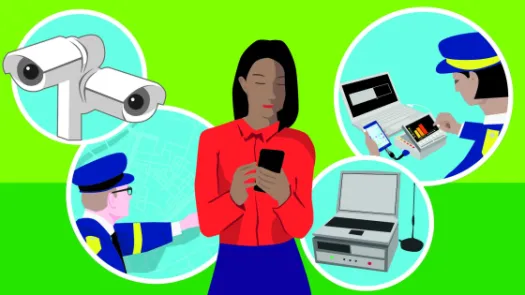Introducing the International Principles on the Application of Human Rights to Communications Surveillance

For some time now there has been a need to update understandings of existing human rights law to reflect modern surveillance technologies and techniques. Nothing could demonstrate the urgency of this situation more than the recent revelations confirming the mass surveillance of innocent individuals around the world.
To move toward that goal, we’re pleased to announce today the formal launch of the International Principles on the Application of Human Rights to Communications Surveillance. The principles articulate what international human rights law – which binds every country across the globe – require of governments in the digital age. They speak to a growing global consensus that modern surveillance has gone too far and needs to be restrained. They also give benchmarks that people around the world can use to evaluate and push for changes in their own legal systems.
The product of over a year of consultation among civil society, privacy and technology experts (read here, here, here and here), the principles have already been co-signed by over hundred organisations from around the world. The process was led by Privacy International, Access, and the Electronic Frontier Foundation.
The release of the principles comes on the heels of a landmark report from the United Nations Special Rapporteur on the right to Freedom of Opinion and Expression, which details the widespread use of state surveillance of communications, stating that such surveillance severely undermines citizens’ ability to enjoy a private life, freely express themselves and enjoy their other fundamental human rights. And recently, the UN High Commissioner for Human Rights, Nivay Pillay, emphasised the importance of applying human right standards and democratic safeguards to surveillance and law enforcement activities.
“While concerns about national security and criminal activity may justify the exceptional and narrowly-tailored use of surveillance programmes, surveillance without adequate safeguards to protect the right to privacy actually risk impacting negatively on the enjoyment of human rights and fundamental freedoms,” Pillay said.
The principles, summarised below, can be found in full at necessaryandproportionate.org. Over the next year and beyond, groups around the world will be using them to advocate for changes in how present laws are interpreted and how new laws are crafted.
We encourage privacy advocates, rights organisations, scholars from legal and academic communities, and other members of civil society to support the principles by adding their signature.
To sign, please send an email to [email protected], or visit https://en.necessaryandproportionate.org/about
Summary of the 13 principles
Legality: Any limitation on the right to privacy must be prescribed by law.
Legitimate Aim: Laws should only permit communications surveillance by specified State authorities to achieve a legitimate aim that corresponds to a predominantly important legal interest that is necessary in a democratic society.
Necessity: Laws permitting communications surveillance by the State must limit surveillance to that which is strictly and demonstrably necessary to achieve a legitimate aim.
Adequacy: Any instance of communications surveillance authorised by law must be appropriate to fulfill the specific legitimate aim identified.
Proportionality: Decisions about communications surveillance must be made by weighing the benefit sought to be achieved against the harm that would be caused to users’ rights and to other competing interests.
Competent judicial authority: Determinations related to communications surveillance must be made by a competent judicial authority that is impartial and independent.
Due process: States must respect and guarantee individuals' human rights by ensuring that lawful procedures that govern any interference with human rights are properly enumerated in law, consistently practiced, and available to the general public.
User notification: Individuals should be notified of a decision authorising communications surveillance with enough time and information to enable them to appeal the decision, and should have access to the materials presented in support of the application for authorisation.
Transparency: States should be transparent about the use and scope of communications surveillance techniques and powers.
Public oversight: States should establish independent oversight mechanisms to ensure transparency and accountability of communications surveillance.
Integrity of communications and systems: States should not compel service providers, or hardware or software vendors to build surveillance or monitoring capabilities into their systems, or to collect or retain information.
Safeguards for international cooperation: Mutual Legal Assistance Treaties (MLATs) entered into by States should ensure that, where the laws of more than one State could apply to communications surveillance, the available standard with the higher level of protection for users should apply.
Safeguards against illegitimate access: States should enact legislation criminalising illegal communications surveillance by public and private actors.



